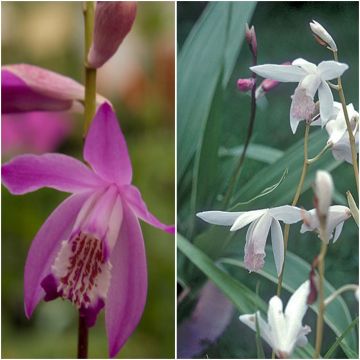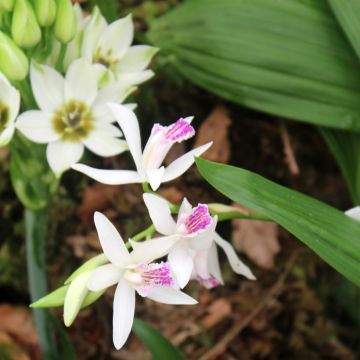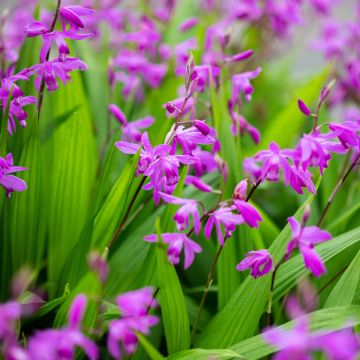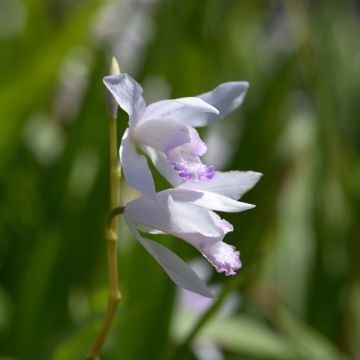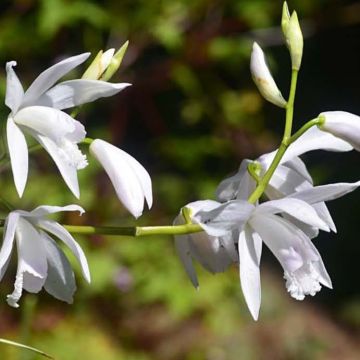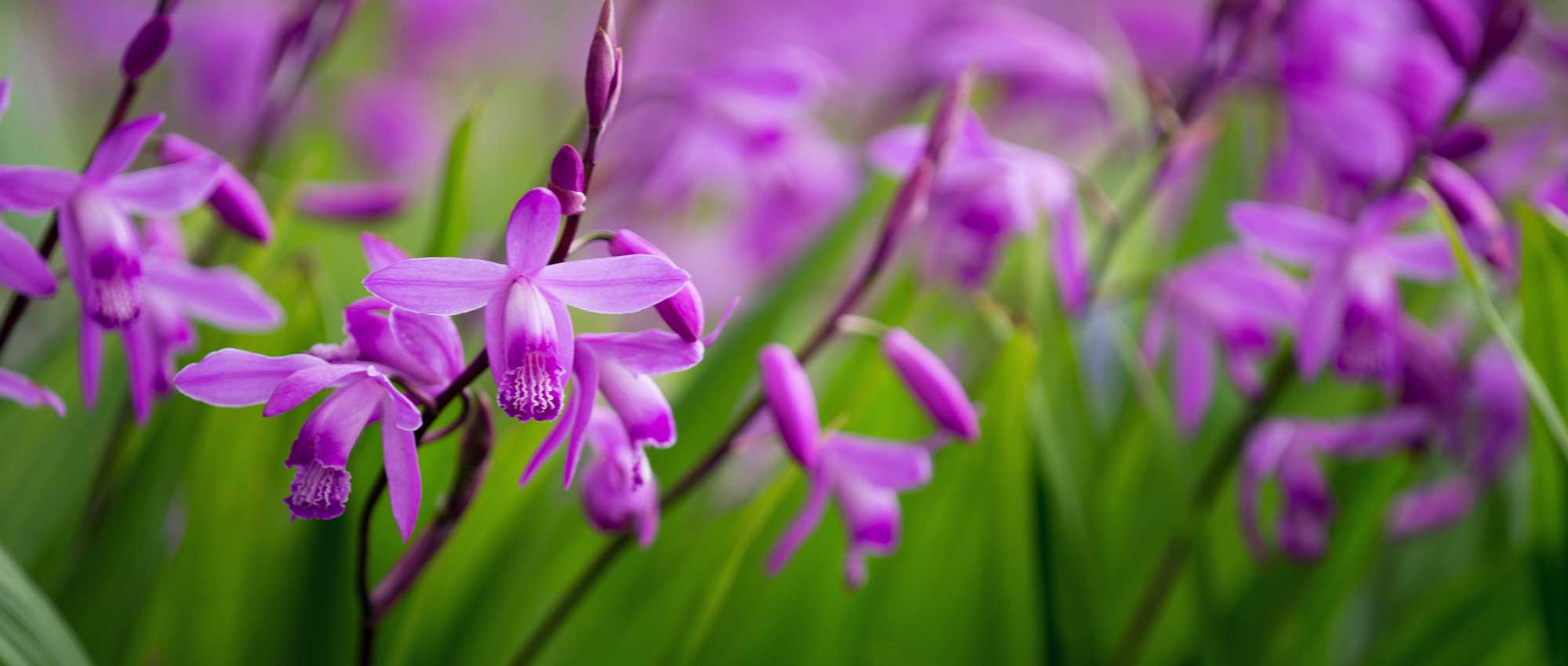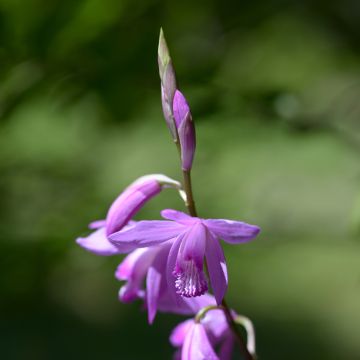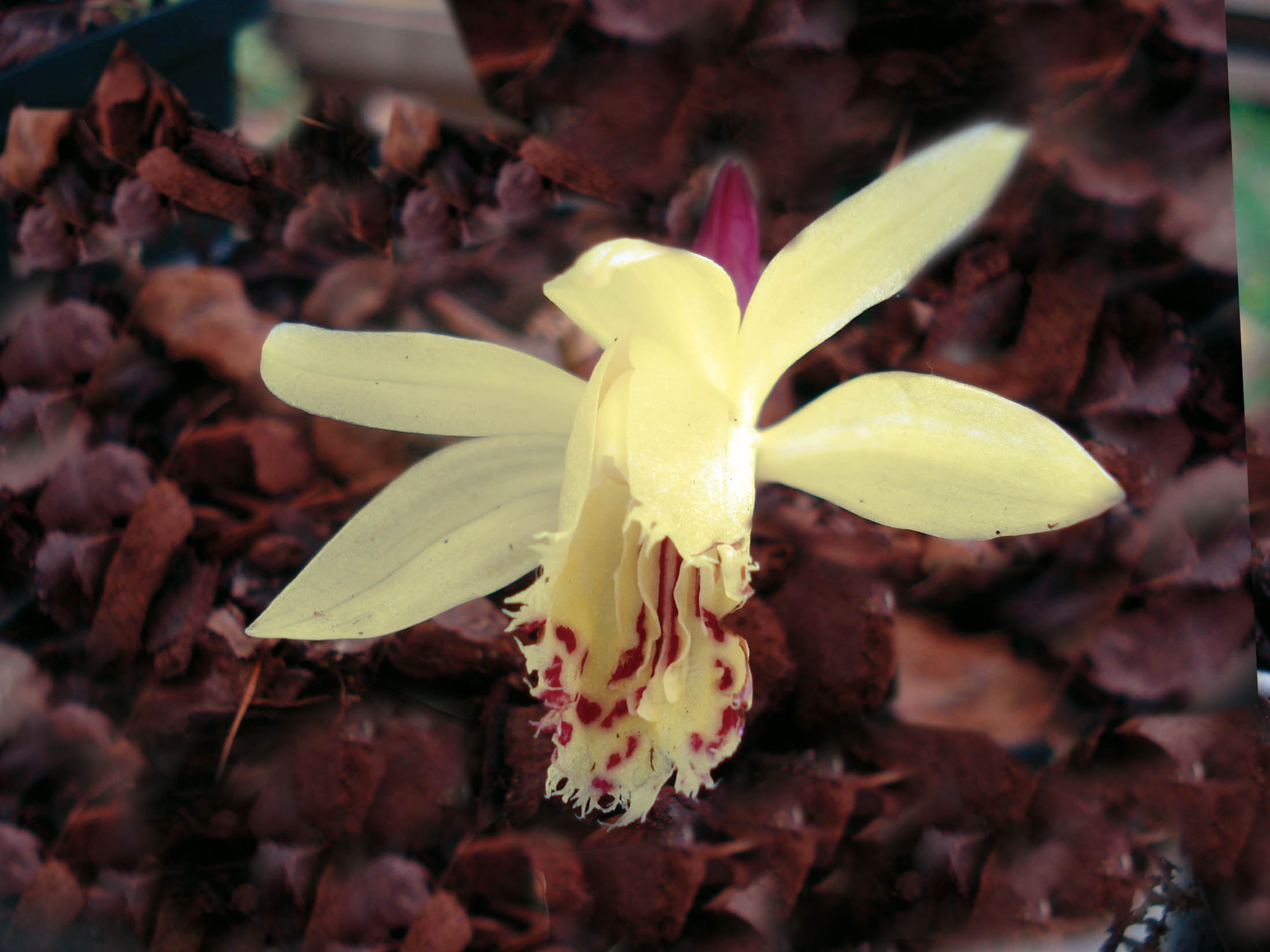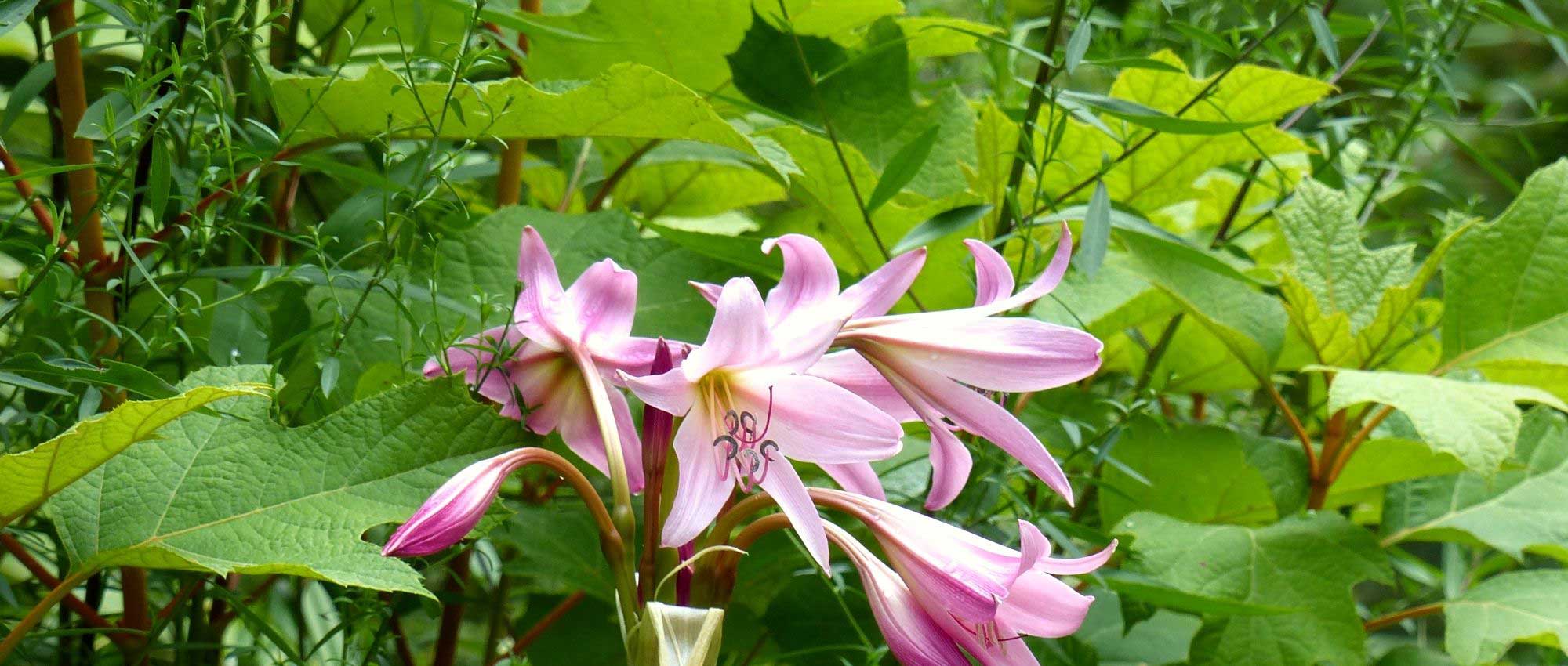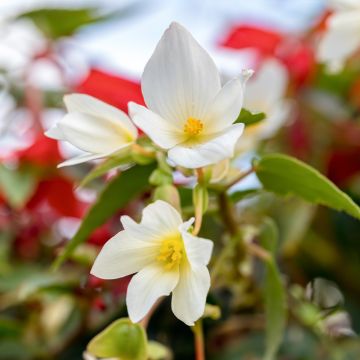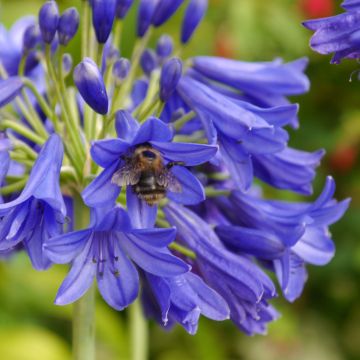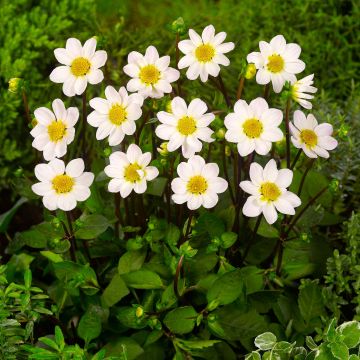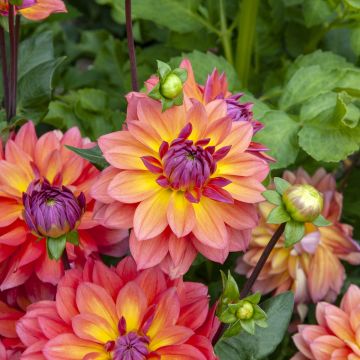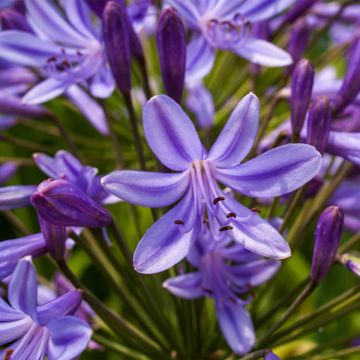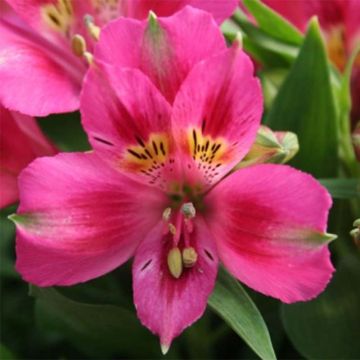

Bletilla Penway Sunset - Hyacinth orchid
Bletilla Penway Sunset - Hyacinth orchid
Bletilla ochracea x szetchuanica Penway Sunset
orchid
Special offer!
Receive a €20 voucher for any order over €90 (excluding delivery costs, credit notes, and plastic-free options)!
1- Add your favorite plants to your cart.
2- Once you have reached €90, confirm your order (you can even choose the delivery date!).
3- As soon as your order is shipped, you will receive an email containing your voucher code, valid for 3 months (90 days).
Your voucher is unique and can only be used once, for any order with a minimum value of €20, excluding delivery costs.
Can be combined with other current offers, non-divisible and non-refundable.
Why not try an alternative variety in stock?
View all →This plant carries a 6 months recovery warranty
More information
We guarantee the quality of our plants for a full growing cycle, and will replace at our expense any plant that fails to recover under normal climatic and planting conditions.
Would this plant suit my garden?
Set up your Plantfit profile →
Description
Bletilla 'Penway Sunset' is a beautiful hardy terrestrial orchid, one of the few that can be planted in the ground. Its large cream-white flowers are abundant in late spring above long pleated leaves and bring lightness and exoticism to partially shaded beds, in moist and well-drained, humus-bearing soil. It is also very attractive in a pot or at the edge of a pond.
Bletilla belongs to the Orchidaceae family, which includes over 25,000 species distributed worldwide, making it one of the largest botanical families today. While we are more accustomed to seeing orchids growing on bark in warm greenhouses and conservatories, there are many terrestrial and hardy species. The orchids of the Bletilla genus, native to evergreen high-altitude forests in China, produce lanceolate light green leaves, which are pleated, slightly arched, with prominent veins, 35 cm long and 5 cm wide. Between May and June, graceful spikes emerge, bearing several large flowers. They are typical of the family, with a large central petal modified into a "tunnel" called the labellum. It spreads slowly through short rhizomes, eventually forming a dense or sparse clump depending on the soil's fertility.
The 'Penway Sunset' variety is the result of an unusual crossbreeding between Bletilla ochracea and B. szetchuanica, two very rare species in gardens. This robust hybrid produces numerous cream-white flowers with a labellum marked with orange-yellow. They have the particularity of being distributed on both sides of the stem, whereas they are on the same side in B. striata. It is a very bright plant in light shade, reaching about 50 cm in height and width under favourable conditions.
The resilient 'Penway Sunset' Bletilla is hardy to at least -15°C, but it has some requirements for proper growth: it needs perfectly drained soil: if water does not drain well during winter, the rhizomes can rot. It particularly appreciates woodland conditions, meaning cool, lightly shaded or lightly sunny, rich and humus-bearing, and slightly acidic to slightly alkaline soil. Full sun is detrimental to it as it damages the foliage. The plant completely disappears during winter and emerges quite late, so make sure to mark its location to avoid an unfortunate spade blow! In cold regions, it is advisable to mulch the crown to protect it.
You can create an exotic-looking bed by combining it with other perennials such as Asian Epimediums (Epimedium davidii, E. 'Amber Queen', E. 'Domino'...), Arisaema, Saruma henryi, ferns like Dryopteris sieboldii or Athyrium 'Pewter Lace', all at the base of trees like Acer griseum, Magnolia delavayi, or Aralia elata 'Silver Umbrella'. You can plant it in a pot or at the edge of a pond, as long as the drainage is sufficient.
Plant habit
Flowering
Foliage
Botanical data
Bletilla
ochracea x szetchuanica
Penway Sunset
Orchidaceae
orchid
Southeast Asia
Other Bletillas or Hyacinth Orchids
View all →Planting and care
Plant Bletilla in rich, light, airy and well-drained soil. You can improve the soil in your garden by incorporating compost for perennial plants. For the best results, add 20% lava stone, which will help maintain good water content in summer while ensuring good drainage during winter. More than intense frost, it is excessive water in winter that proves to be the main enemy of the pseudo-bulbs. Bletilla can also be kept in pots. However, make sure to choose a container large enough, with a minimum diameter of 30 to 40 cm, to allow the new shoots to develop on the periphery. Water regularly from April to September and then let your plants rest. In winter, in regions with very harsh cold (-20°C), place your pots in a cool (below 5°C) and bright place.
Planting period
Intended location
Care
Planting & care advice
This item has not been reviewed yet - be the first to leave a review about it.
Similar products
Haven't found what you were looking for?
Hardiness is the lowest winter temperature a plant can endure without suffering serious damage or even dying. However, hardiness is affected by location (a sheltered area, such as a patio), protection (winter cover) and soil type (hardiness is improved by well-drained soil).

Photo Sharing Terms & Conditions
In order to encourage gardeners to interact and share their experiences, Promesse de fleurs offers various media enabling content to be uploaded onto its Site - in particular via the ‘Photo sharing’ module.
The User agrees to refrain from:
- Posting any content that is illegal, prejudicial, insulting, racist, inciteful to hatred, revisionist, contrary to public decency, that infringes on privacy or on the privacy rights of third parties, in particular the publicity rights of persons and goods, intellectual property rights, or the right to privacy.
- Submitting content on behalf of a third party;
- Impersonate the identity of a third party and/or publish any personal information about a third party;
In general, the User undertakes to refrain from any unethical behaviour.
All Content (in particular text, comments, files, images, photos, videos, creative works, etc.), which may be subject to property or intellectual property rights, image or other private rights, shall remain the property of the User, subject to the limited rights granted by the terms of the licence granted by Promesse de fleurs as stated below. Users are at liberty to publish or not to publish such Content on the Site, notably via the ‘Photo Sharing’ facility, and accept that this Content shall be made public and freely accessible, notably on the Internet.
Users further acknowledge, undertake to have ,and guarantee that they hold all necessary rights and permissions to publish such material on the Site, in particular with regard to the legislation in force pertaining to any privacy, property, intellectual property, image, or contractual rights, or rights of any other nature. By publishing such Content on the Site, Users acknowledge accepting full liability as publishers of the Content within the meaning of the law, and grant Promesse de fleurs, free of charge, an inclusive, worldwide licence for the said Content for the entire duration of its publication, including all reproduction, representation, up/downloading, displaying, performing, transmission, and storage rights.
Users also grant permission for their name to be linked to the Content and accept that this link may not always be made available.
By engaging in posting material, Users consent to their Content becoming automatically accessible on the Internet, in particular on other sites and/or blogs and/or web pages of the Promesse de fleurs site, including in particular social pages and the Promesse de fleurs catalogue.
Users may secure the removal of entrusted content free of charge by issuing a simple request via our contact form.
The flowering period indicated on our website applies to countries and regions located in USDA zone 8 (France, the United Kingdom, Ireland, the Netherlands, etc.)
It will vary according to where you live:
- In zones 9 to 10 (Italy, Spain, Greece, etc.), flowering will occur about 2 to 4 weeks earlier.
- In zones 6 to 7 (Germany, Poland, Slovenia, and lower mountainous regions), flowering will be delayed by 2 to 3 weeks.
- In zone 5 (Central Europe, Scandinavia), blooming will be delayed by 3 to 5 weeks.
In temperate climates, pruning of spring-flowering shrubs (forsythia, spireas, etc.) should be done just after flowering.
Pruning of summer-flowering shrubs (Indian Lilac, Perovskia, etc.) can be done in winter or spring.
In cold regions as well as with frost-sensitive plants, avoid pruning too early when severe frosts may still occur.
The planting period indicated on our website applies to countries and regions located in USDA zone 8 (France, United Kingdom, Ireland, Netherlands).
It will vary according to where you live:
- In Mediterranean zones (Marseille, Madrid, Milan, etc.), autumn and winter are the best planting periods.
- In continental zones (Strasbourg, Munich, Vienna, etc.), delay planting by 2 to 3 weeks in spring and bring it forward by 2 to 4 weeks in autumn.
- In mountainous regions (the Alps, Pyrenees, Carpathians, etc.), it is best to plant in late spring (May-June) or late summer (August-September).
The harvesting period indicated on our website applies to countries and regions in USDA zone 8 (France, England, Ireland, the Netherlands).
In colder areas (Scandinavia, Poland, Austria...) fruit and vegetable harvests are likely to be delayed by 3-4 weeks.
In warmer areas (Italy, Spain, Greece, etc.), harvesting will probably take place earlier, depending on weather conditions.
The sowing periods indicated on our website apply to countries and regions within USDA Zone 8 (France, UK, Ireland, Netherlands).
In colder areas (Scandinavia, Poland, Austria...), delay any outdoor sowing by 3-4 weeks, or sow under glass.
In warmer climes (Italy, Spain, Greece, etc.), bring outdoor sowing forward by a few weeks.






























